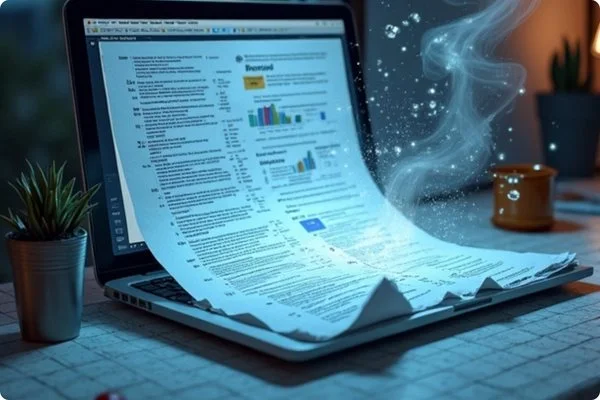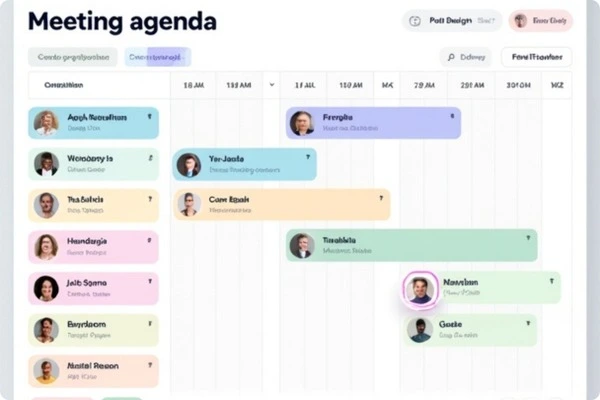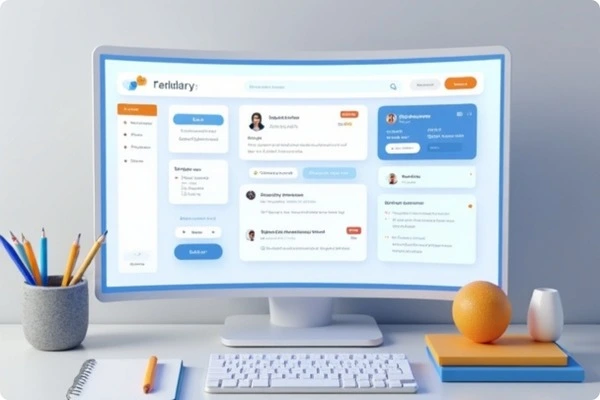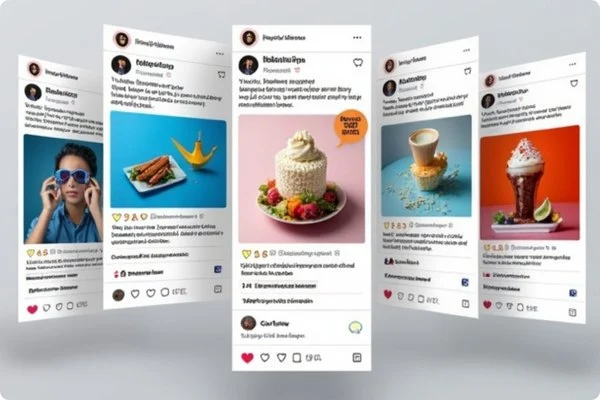ChatGPT Prompts are rapidly changing how we approach work in the modern age. The way we work is evolving at lightning speed, and artificial intelligence is driving much of this transformation. I’ve seen firsthand how smart, accessible tools like ChatGPT reshape the day-to-day operations across countless industries. Gone are the days when AI was just a techie buzzword—in 2025, it’s a daily companion for professionals seeking efficiency, originality, and a competitive edge. This deep dive paints a big-picture view of why harnessing AI for productivity isn’t just a good idea—it’s fast becoming essential.
How AI Is Powering Up Productivity?
Let’s start with a fact: most professionals are swimming in repetitive tasks, emails, meetings, and mountains of information. AI tools like ChatGPT step in as a digital co-pilot, taking the grunt work off your plate and clearing the way for creativity and strategic thinking. When used responsibly, AI becomes a multiplier. It doesn’t just save time; it opens up new ways to organize, communicate, and uncover insights hidden in your daily workflow.
1. Draft Compelling and Professional Emails Faster
Prompt: “Compose a clear, professional, and empathetic reply to this client’s inquiry: [insert question]. Focus on clarity, warmth, and next steps.”
Why this works: Email remains the backbone of workplace communication. Using ChatGPT streamlines not just spelling and grammar but structure, tone, and personalization. I like to add specific examples, answer anticipated questions, and use plain language to foster trust.
Pro Tip: Add relevant links, share availability for follow-ups, and always request feedback for continuous improvement.
2. Brainstorm Blog Titles That Stand Out
Prompt: “Suggest ten original and engaging blog post titles for an article about [your topic]. Prioritize creativity, relevancy, and clarity. Avoid clickbait.”
Why this works: High-quality headlines are the gateway to ranking in Google’s featured snippets. I rely on AI to spark new angles, then use keyword research tools to check search demand and competition. The best titles intrigue the reader and make clear promises.
Extra Add-on: After generating, ask ChatGPT to analyze which headline matches your SEO intent and target audience best.
3. Summarize Lengthy Documents and Reports
Prompt: “Summarize the following long report into key takeaways, using bullet points and plain language. Highlight actionable items and any urgent deadlines.”
Why this works: Busy teams need information ASAP, not fluffy summaries. I always check the summary for accuracy and completeness. ChatGPT does the heavy lifting, but my review ensures nothing crucial is missed.
Extended Use: Pair this with a visual summary—ask for mind maps or short tables for extra clarity.

www.businesstechview.com
4. Generate Meeting Agendas That Keep Everyone on Track
Prompt: “Draft a detailed, time-efficient agenda for a [type] meeting. Include main topics, objective, who presents each item, and recommended time for each discussion point.”
Why this works: Meetings drag on without a clear plan. By pre-building an agenda, I help attendees stay focused and respect everyone’s time. I often follow up by prompting for action item checklists or minutes summaries with assigned owners.
Pro Suggestion: Link the agenda to calendar invitations and attach related documents for reference before the meeting.

www.businesstechview.com
5. Create Step-by-Step Process Guides for Any Task
Prompt: “Outline a detailed, step-by-step guide for [specific task or process], ensuring clarity for beginners and noting any common mistakes to avoid.”
Why this works: Documentation is crucial for scaling teams. AI helps by making instructions methodical, scannable, and comprehensive. I often layer on screenshots, video links, or infographics for learners with different preferences.
Growth Tip: Revisit these guides regularly—prompt ChatGPT to update instructions if tools or policies change.
6. Simplify Jargon and Rewrite for Accessibility
Prompt: “Rewrite this technical explanation for a non-expert audience, replacing jargon with easy-to-understand metaphors and everyday language.”
Why this works: Google prioritizes accessible and user-focused content. I like to imagine explaining a complex process to a new hire or a client from outside my industry—if they can’t follow along, it’s time to simplify further.
Personal Trick: Ask ChatGPT to test readability scores and flag words that might confuse beginners.
7. Automate FAQ and Customer Support Email Responses
Prompt: “Compose a concise, helpful reply to this common customer question: [insert FAQ]. Include next steps and a friendly closing.”
Why this works: Consistent, fast support boosts brand loyalty. AI can keep language positive and professional, ensure each question gets a complete answer, and prevent human error.
Scale Strategy: Save these responses as templates or integrate them into your helpdesk platform for even greater efficiency.

www.businesstechview.com
8. Discover and Summarize Emerging Industry Trends
Prompt: “Identify five new trends in [your field] using the latest research and reputable online sources. Summarize each in two sentences, citing sources for each.”
Why this works: Staying up-to-date means weaving in trend analysis, competitor monitoring, and market insights into your workflow. ChatGPT’s summaries focus attention on what’s changing, and I always double-check source credibility to ensure alignment with Google’s quality standards.
Pro Practice: Combine AI research with your own commentary or industry anecdotes for an authentic edge.
Prompt: “Generate seven unique social media post ideas for [platform] about [topic], focusing on engagement and value for [audience description]. Include one call-to-action for each.”
Why this works: Consistency and originality drive social accounts forward. AI can help break creative ruts and align posts with seasonal events or trending hashtags. I preview each post to ensure brand voice, inclusivity, and regulatory compliance.

www.businesstechview.com
10. Proofread, Edit, and Optimize Drafts for SEO Clarity
Prompt: “Review the following draft for grammar, tone, SEO best practices, and factual accuracy. Highlight improvements and rewrite any weak sections.”
Why this works: Spotting your typos gets harder over time. With ChatGPT, I get fresh eyes. I run several rounds—one for grammar, one for clarity, and one for keyword optimization. Manual review is always my last step.
Advanced Move: Request keyword density checks, internal link suggestions, or meta description drafts for search engines.
11. Strategically Map Out Project Plans & Roadmaps
Prompt: “Break down a new project on [goal/topic] into actionable tasks with deadlines, responsible persons, and priority level. Present as a table.”
Why this works: Projects succeed with crystal-clear plans. AI can structure even large initiatives into manageable bites and ensure nothing slips through. I adapt the output into my preferred project management tool for follow-ups and tracking.
Productivity Hack: Ask for risk analysis or mitigation plans for complex or high-stake projects.
Conclusion: Charting Your AI-Driven Future
Embracing ChatGPT isn’t just about boosting numbers—it’s fundamentally changing how we work, collaborate, and deliver value. By following ethical best practices and Google’s gold-standard guidelines, I keep evolving my process and maximizing results. The prompts above are launching pads; your creativity and critical thinking are what make the real magic happen.
Ultimately, the best AI-powered content doesn’t feel generic or mechanical. It feels like you, just with superpowers. Here’s to a smarter, more productive, and more rewarding workday, every day.
FAQs:
Q1. Is using ChatGPT for work tasks considered ethical and Google-compliant?
Yes—if you disclose AI usage, prioritize quality and originality, avoid sensitive data, and ensure all outputs are human-reviewed before publishing, you’ll stay in Google’s good graces.
Q2. Can AI create plagiarism-free content?
As long as prompts demand unique value, and you check all outputs with plagiarism checkers. Always add your personal experience or company specifics for maximum originality.
Q3. What are some common risks of using ChatGPT at work?
Potential risks include over-reliance on automation, factual inaccuracies, or regulatory breaches. Review outputs carefully, never input confidential data, and keep guidelines handy.
Q4. How often should I update my AI-generated content?
Refresh content every few months or when new guidelines, algorithms, or business priorities emerge. Google rewards fresh and accurate content.
Q5. Will AI completely replace human writers?
AI is a powerful assistant, not a substitute. Human oversight, creativity, empathy, and editorial judgment are irreplaceable in high-performing content teams.








